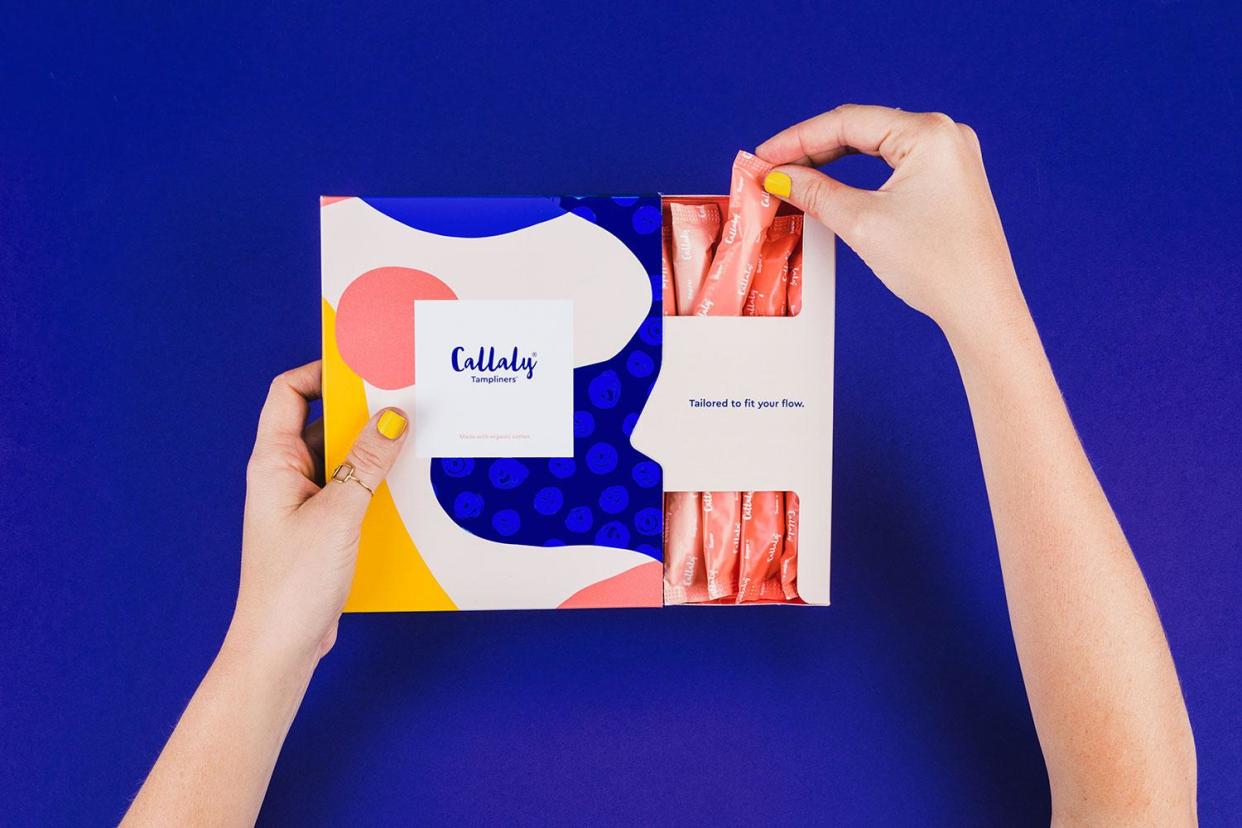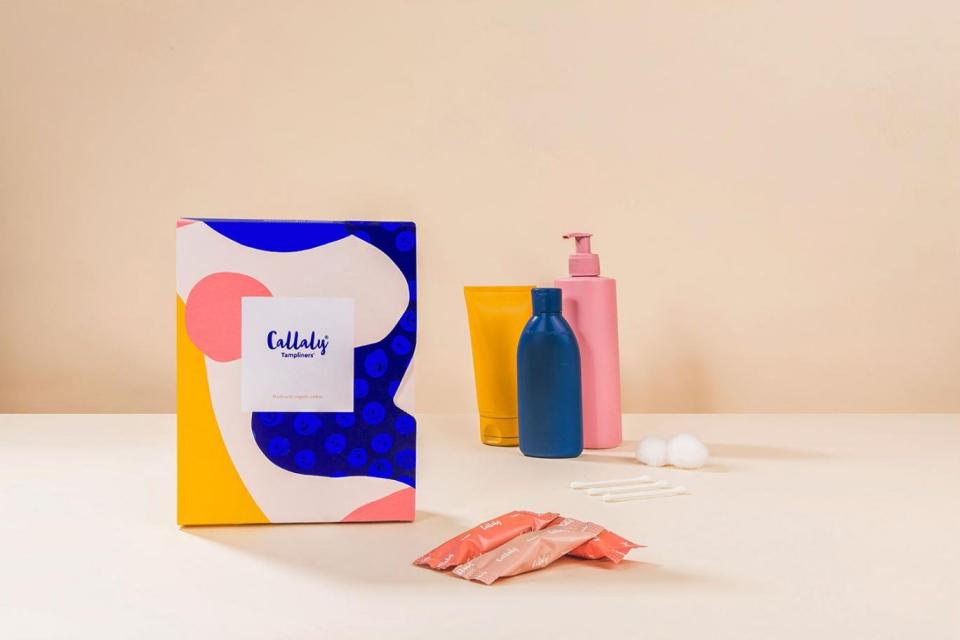Callaly: the femcare start-up pushing for innovation in period products

Considering the average women uses around 11,000 tampons in her lifetime, it’s shocking to learn that the last new tampon product was launched over 80 years ago, in 1936.
That was until Callaly came along. Created by gynaecologist Alex Hooi, the start-up launched its first product, the Tampliner earlier this year.
Made up of 100 per cent organic cotton, and sterilised which not all tampons are, the new product is a cross between a tampon and a liner, to provide security and comfort to those using them. Here’s how the new product works.
As well, Callaly offers a bespoke subscription service, allowing customers to customise their order dependent on their cycle and flow.
Central to the Callaly team is Ewa Radziwon, a garment technologist, who helped create and design the new Tampliner.
We caught up with Radziwon to find out more about Callaly and why it’s important to see more innovation in period products.

Meet Ewa Radziwon, garment technologist at Callaly
ES: Hi Ewa! Tell us about your background as a garment technologist
Ewa Radziwon: I have always had a love of fashion and have worked in the industry in many roles. I went back to college at the London College of Fashion to study design, development and garment technology. I’ve worked as a garment technologist for Karen Millen and at Harrods as a technologist for designer fashion.
ES: How does a garment technologist end up working for a fem care brand?
ER: Callaly’s founder, Alex Hooi, got in touch with LCF looking for a designer and seamstress.
Even though the idea sounded crazy, a femcare start-up desiging the first real innovation in tampons for 80 years, I thought, “why not!” This is an area that deserved design innovation as much as fashion.
I started working part-time with Alex, sourcing materials and working on product design, before going full time at the beginning of 2017.
ES: What attracted you to working for Callaly?
ER: I liked the idea of having such a critical role in developing a brand new product and I was genuinely excited about how innovative it was, in an area that could really help people.
I also believe in Alex. He really wants to make a better product for women and to give us more choice in femcare where there hadn’t been any design innovation in decades.
It might sound odd that I’m a garment technologist working for a femcare company but it makes sense to me. I’ve spent years working closely with fabrics, thinking about their relationship with women’s bodies as part of the design process. Although Tampliners are worn inside your body, many of the design principles are the same: how can we use the best quality materials that will serve the best design.
ES: How did you develop Callaly’s first product, the Tampliner?
ER: Alex had researched the design requirements with regards to women’s anatomy, using his medical knowledge and understanding of women’s bodies and their experience with femcare products. But he needed help developing and improving the design, as well as sourcing the best possible materials.
We did user trials with more than 500 women to discover what problems they faced with tampons. We tested various designs before we settled on the materials and design of the Tampliner model released this year.

ES: Callaly Tampliners are all sterilised even though this isn’t mandatory under UK law. Why did you make this decision?
ER: We believe that the standards for new femcare products in the UK are too low. Products need to only meet the standards set by the General Product Safety Directive, and the UK voluntary code of practice, supported by the industry body, the AHMPA.
As with any medical product, sterilisation helps eliminate any microorganisms like bacteria. We wanted to make sure our Tampliners are as safe and hygienic as they possibly can, which means ensuring they are sterilised.
ES: Callaly donates some of its sales and staff time to charities supporting people with periods. Why does it do this?
ER: We think that period poverty is an unacceptable reality around the world. This aspect of poverty has a double layer of shame because of the pre-existing taboo about period. We donate products to those in need via several charities, including Bloody Good Period, Southall Black Sisters, Bethany House and Solace, and we will always talk openly about periods to break the taboo.
As well, we’re supporting the #FreePeriod movement which aims to prevent period poverty for schoolgirls by calling on the UK government to give free femcare products to children from low-income families.
The whole team has been volunteering at Bloody Good Period this month, helping them log and sort donations, getting items ready to go out to drop-ins. And in April, we’re donating 10,000 organic cotton pads to more organisations that support women and girls in poverty in the UK.
ES: Callaly charges £8 for a box of Tampliners, which is expensive compared to other tampon products. How can you justify this?
EW: The price is higher than that of some tampon brands for three reasons. First, we use the finest available materials: organic cotton, a shed-free surface covering the tampon to prevent fibres being left inside the vagina and medical-grade polymer for the application.
Second, because we sterilise the Tampliners.
And finally, we don’t outsource to overseas factories that could produce our product more cheaply. Tampliners are made completely in the UK which supports the British economy and has less impact on the environment. Even our box uses vegetable-based inks, sustainable forestry sources, and is biodegradable, all at a higher cost and unlike many high street brands.
ES: What’s next for Callaly this year?
EW: It’s still very early days for us here in the UK, we’re getting to know our customers and their needs. As well as the Tampliner, we are developing other products that also improve on conventional femcare options and aiming to launch in Europe and the US later this year.

 Yahoo News
Yahoo News 
